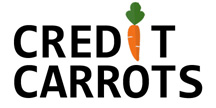Asset allocation is essentially dividing your investment portfolio dollars between various assets for the purposes of diversification. These assets can include things such as stocks/ETF’s/Funds, bonds, and cash. The purpose of diversification is to ensure that your money is protected from wild swings in the market, and grows at a reasonable pace over the long term.
An ideal asset allocation will depend heavily on your personal circumstances, and it is impossible for us to go over all of the allocation options in an article.
What we will do here is provide a sample allocation that will work well for the new investor. The allocation is slightly conservative, but it will allow you to get your feet wet in the market so that you can make your own decisions about how to tweak the portfolio.
Things to Consider With Asset Allocation
A good chunk of new investors follow an asset allocation of 50% stocks and 50% bonds.This popular approach operates on the following assumptions:
- Bonds are always safer than stocks.
- Stocks and bonds move in opposite directions such that if stock values drop then bond values rise – and vice versa.
However, those two assumptions are not necessarily true.
The two main factors that cause the market to move in significant ways are:
- Unexpected inflation/deflation in the economy.
- Unexpected economic growth/decline in the economy.

From the infographic above, we can see that sometimes stocks and bonds will move in the same direction. Having these assets move in the same direction is not a good scenario for diversification.
When you diversify your asset allocation, the entire point is to diversify your risk.
Various asset classes, such as stocks and bonds, have different levels of risk. Since stocks tend to be riskier than bonds, then you must have more bonds than stocks if you want the overall risk to be balanced.
If you’re able to match the direction each asset class moves in various types of market situations with their relative risk, then you get a great asset allocation model.
According to Ray Dalio (one of the most successful investors of our time), a good portfolio for a new and inexperienced investor should look something like the chart below.

Implementing This Asset Allocation in Canada
So now that we know what asset allocation we want, what do we actually buy? In Canada, we have less options on our exchanges when compared with our American friends. We have tried to suggest investments that trade in Canadian dollars.
As always, aim to buy these in your Tax-Free Savings Account (TFSA) whenever possible!
15% iShares S&P/TSX 60 Index ETF (Symbol: XIU). This one accounts for half of your “stock” allocation, and is essentially an index ETF tracking the Canadian market. This ETF seeks to achieve long-term capital growth by replicating the performance of the S&P/TSX 60 Index.
15% S&P 500 Index ETF(Symbol: VFV). This one accounts for the other half of your “stock” allocation, and is an index ETF tracking the American market. Perhaps unfortunately for Canadians, the US market tends to perform better over the long term. This is why we recommend getting at least a 15% exposure to the American stock market. You could also bump this number up to 30%, and cut out the TSX exposure completely.
15% iShares Core Canadian Short Term Bond Index ETF (Symbol: XSB). This one is for all of your “intermediate term bonds” allocation although technically this is a “short term” bond ETF. This ETF tracks the 0–5 year government bond index. There aren’t many great options for intermediate Canadian bond ETF’s, so that’s why we’re recommending this short term one. If you have an USD investing account, then you could replace this ETF with the Vanguard Intermediate Bond ETF (Symbol: BIV).
40% iShares Core Canadian Long Term Bond Index ETF (Symbol: XLB). This one is for all of your “long term bonds” allocation. This ETF tracks the long-term investment-grade Canadian bond market.
7.5% iShares S&P/TSX Global Gold Index ETF (Symbol: XGD). This one accounts for all of your “gold” allocation. This investment tracks the performance of the S&P/TSX Global Gold Index. This means that it invests in gold companies rather than physical gold. This will make the price swings on this investment more volatile than physical gold.
7.5% Invesco DB Commodity Tracking (Symbol: DBC). This one accounts for all of your “commodities” allocation. Unfortunately there isn’t a great commodities ETF on the Canadian exchanges so we have to use this ETF. This fund tracks the prices of over ten commodities including oil, wheat, zinc, natural gas, and soy beans. Alternatively, you can buy single commodity ETF’s (e.g. oil, natural gas, silver etc.) by themselves on the Canadian exchanges but it is a lot more work to piece together a broad commodities position yourself.
We are not financial advisors, and no content on this site should not be taken as financial advice. No guarantee can be made if you invest based on the information provided on this blog. We make no warranty of any kind regarding the blog and/or any content, data, materials, information, products or services provided on the blog.











Leave a Comment